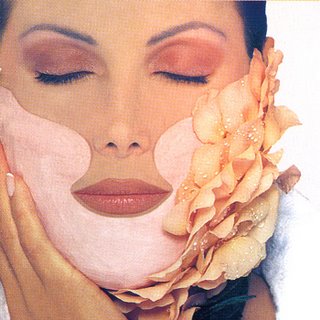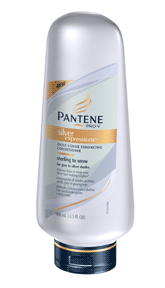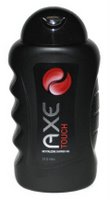Beauty Q&A: Can Anti-Cellulite Creams Make You Lose Weight?
Come see the new Beauty Brains for all your beauty questions.
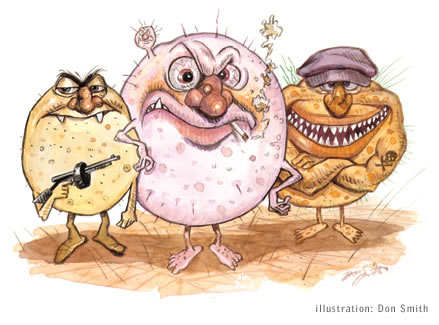
 europaea (olive) fruit oil, caprylic/capric triglyceride, sorbeth-30 tetraoleate, tocopherol, phenoxyethanol, propylparaben, stearyl glycyrrhetinate, rosmarinus officinalis (rosemary) leaf oil
europaea (olive) fruit oil, caprylic/capric triglyceride, sorbeth-30 tetraoleate, tocopherol, phenoxyethanol, propylparaben, stearyl glycyrrhetinate, rosmarinus officinalis (rosemary) leaf oil

"What about pore strips? What has me most concerned about pore strips (which are not as widely available as they once were) is that most people don’t pay attention to the warnings clearly printed on the side of the box. Pore strips are accompanied by strong warnings such as not to use them over any area other than the nose and not to use them over inflamed, swollen, sunburned, or excessively dry skin. It also states that if the strip is too painful to remove, you should wet it and then carefully remove it. What a warning! You may at first be impressed with what comes off your nose. (Well, if you have extremely superficial, noticeable black-looking blackheads, there is no question: you will be impressed.) Most people do have some oil sitting at the top of their oil glands (most of the face's oil glands are located on the nose), and whether you use these strips or a piece of tape, black dots and some skin will be removed. Is that helpful? Briefly, but if you use these repeatedly, they will not eliminate the problem and the ingredients on the strip can eventually irritate skin and potentially trigger further breakouts."

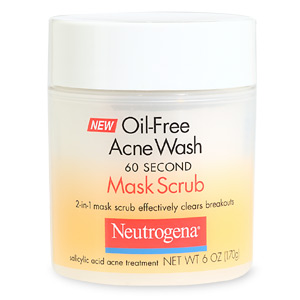
 Carrie's Curious About Cleaning:
Carrie's Curious About Cleaning:“This pharmaceutical grade aromatherapy spray gently cleans make up brushes with natural ingredients. Its alcohol and hydrogen peroxide formulation helps purify and quick dry your Colorescience brushes.”2) A manufacturer of squirrel hair brushes (no, we’re not making this up) recommends the following and we quote:
“There are many brush cleaners available. Two excellent brands worth mentioning are Masters Brush Cleaner & Preserver and "Pink Soap" Artist Brush Cleaner and Conditioner. They both clean and rinse out very well. Moreover, they help condition your makeup brush hair. They are available at any good art supply store.”The Brain’s attorneys won’t let us comment on the viability of using art supplies to clean your make up brushes, but hey, if it’s good enough for squirrels… But seriously, you should check out their website just to see their instructions on how to clean and dry brushes - they've got some good tips.
Interesting. We’re not sure if this is scientifically valid, but interesting.
“After cleansing your face in the morning, you are more than likely spreading bacteria back on your face when you apply make-up with a brush. Makeup brushes are breeding grounds for bacteria. To help keep my brushes clean after each use, I simply wipe each brush back and forth over an inexpensive anti-bacterial wet wipe before putting them away. (You can actually see the makeup and blush residue deposited on the wipe!) Your brushes will be dry in about 3 minutes and stay much cleaner in between washings. This helps to keep breakouts to a minimum.”




“It has virtually no sebacious glands, which makes it highly prone to dryness. It is much thinner and more sensitive than other facial skin. It overlies a particularly dense capillary network and has minimal fat padding, which makes the eye area prone to puffiness. It is stressed by frequent eye movements and squinting.” *courtesy of Smartskincare.comCosmetics made for use around the eyes are formulated to address these specific properties. Facial skin, on the other hand, needs products formulated differently because the area around the nose and cheeks is filled with active oil glands. You don’t want to apply too many oily moisturizers to this area! (Acne anyone?) So, it looks like you need to decide WHERE on your face the product will be used before you pick the product.
 Scientists from the Ohio State University are reporting that using make-up to cover severe facial marks may not actually make women with severe facial blemishes feel better about themselves. In a paper published in the most recent issue of the International Journal of Dermatology women with these blemishes reported a lower quality of life than women with similar blemishes who did not wear concealing make-up.
Scientists from the Ohio State University are reporting that using make-up to cover severe facial marks may not actually make women with severe facial blemishes feel better about themselves. In a paper published in the most recent issue of the International Journal of Dermatology women with these blemishes reported a lower quality of life than women with similar blemishes who did not wear concealing make-up.
 companies acknowledge that parabens are more effective. They also do not believe there are any real safety issues, but it is an opportunity to create new products so they are taking it. Unfortunately, every other effective preservative such as DMDM Hydantoin (a formaldehyde ingredient) or Kathon (synthetic) have potential safety issues. And suggested alternatives like grapefruit seed extract · phenoxyethanol · potassium sorbate · sorbic acid · tocopherol (vitamin E) · vitamin A (retinyl) · vitamin C (ascorbic acid) don’t really work too well. The available preservatives aren’t perfect, but they are the best there is. And they are certainly better than using nothing. Bacteria, yeast, & mold could really kill you!
companies acknowledge that parabens are more effective. They also do not believe there are any real safety issues, but it is an opportunity to create new products so they are taking it. Unfortunately, every other effective preservative such as DMDM Hydantoin (a formaldehyde ingredient) or Kathon (synthetic) have potential safety issues. And suggested alternatives like grapefruit seed extract · phenoxyethanol · potassium sorbate · sorbic acid · tocopherol (vitamin E) · vitamin A (retinyl) · vitamin C (ascorbic acid) don’t really work too well. The available preservatives aren’t perfect, but they are the best there is. And they are certainly better than using nothing. Bacteria, yeast, & mold could really kill you! 


